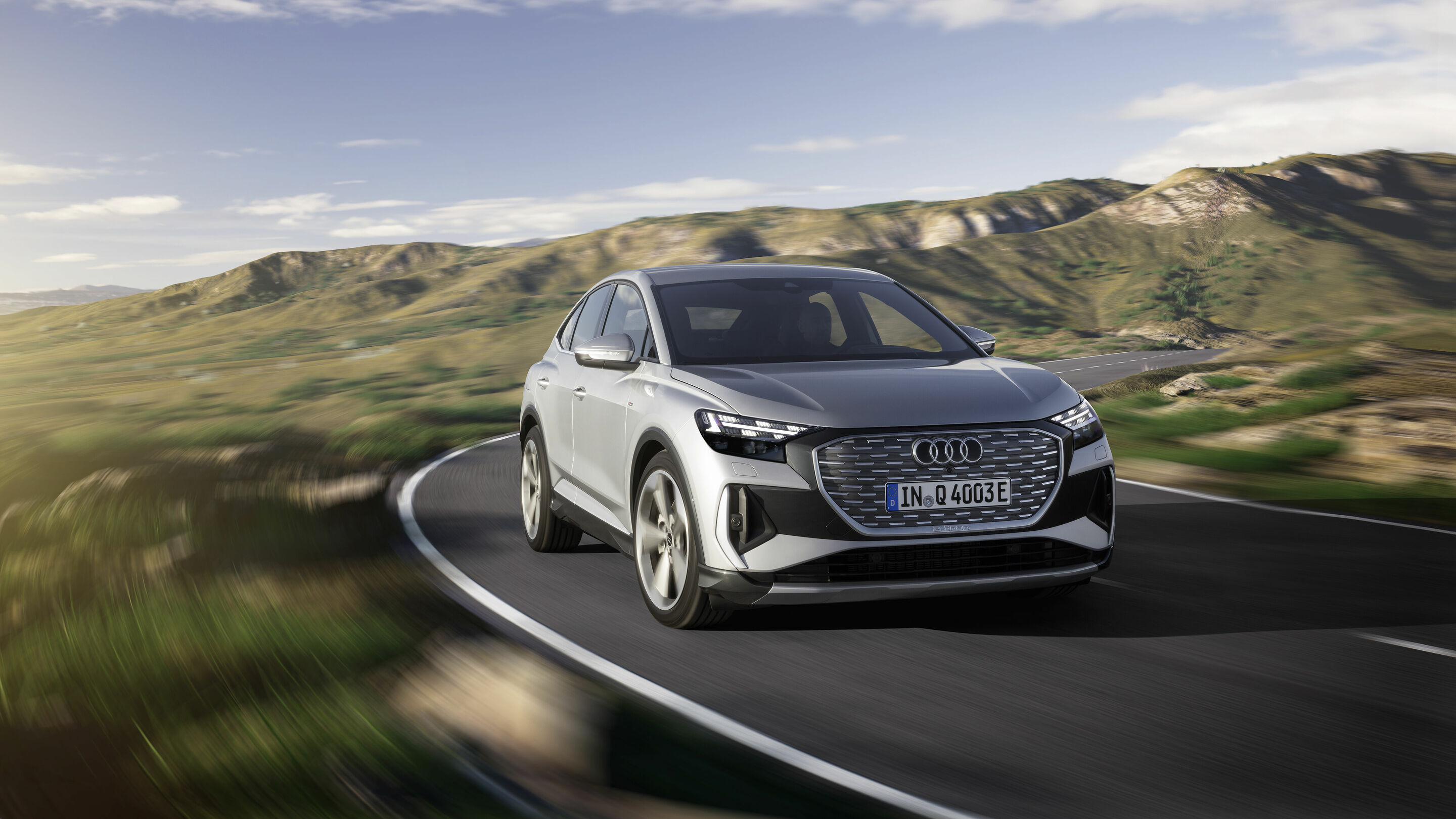Body and aerodynamics
Back to overviewCrash-resistant, torsionally rigid, aerodynamic – the body of the Q4 e-tron and the Q4 Sportback e-tron combines a great many strengths. Large parts made of hot-formed steel provide the strong backbone of the passenger cell and account for 26 percent of the weight. They combine a light weight with very high tensile strength and are used everywhere that strong forces have to be absorbed in the event of a collision – in the transition between the longitudinal members and the passenger cell, in the A- and B-pillars, in the roof members, as double cross-bracing under the front seats, and in the side sills.
High level of protection in the event of a side impact collision: the B-pillars and the hybrid sills
The B-pillars are designed so that they deform more in the lower section than in the upper section in a side impact collision in order to dissipate the energy in a targeted way here. The sills are also given a challenging task: to protect the high-voltage battery.
That is why they are designed in an innovative hybrid construction method: An extruded aluminum section serves as the core, bars inside stiffen it and divide it into several chambers. An outer layer of high-strength hot-formed steel encloses the profile. The aluminum material accounts for just under ten percent of the body cell of the Q4 e-tron and the Q4 Sportback e-tron.
Throughout the body, sophisticated insulation measures reduce the transmission of road and tire noise. The large cavities, such as the longitudinal members and the metal roof, contain foam elements, and acoustic capsules made of lightweight foam are fitted above the rear electric motor and at the bulkhead. Parts such as the instrument cross beam, the wheel arches, the pillars, and even the rear bumper are also fitted with insulating and damping elements. The windshield is made as standard of acoustic glass, which can also be used for the front side windows on request. Dark privacy glazing is available for the rear sections as a further option. In the final analysis, Audi’s electric compact SUVs are among the best cars in their class when it comes to the noise level in the interior.
Great aerodynamics: drag coefficient of just 0.26
Form follows function: The design of the two compact electric SUVs is full of character and impresses with the high quality of its aerodynamics. The Audi Q4 e-tron and the Q4 Sportback e-tron generate drag coefficients of 0.28 and 0.26 respectively, with the efficiency and range reaping the benefits.
One key factor for this is the main section of the body – the greenhouse on both models is drawn in sharply towards the rear. The adjustable cooling air inlet forms another important factor in the concept. Sitting in front of the package comprising radiator and compressor, which is supplied by the central lower air inlet, is a frame with an electric louver. Depending on the situation, it is opened if the major assemblies require cool air, such as when the vehicle is charging. In the majority of situations, the louver remains closed to minimize the energy losses that occur when air flows through the narrow cooling ducts. The benefit this generates for the range is around six kilometers.
The underbody design of the Q4 e-tron is almost completely smooth. Three-dimensional spoilers in front of the front wheels optimize the airflow – the advantage they give through their aerodynamics adds no less than 14 kilometers to the range. The control arms of the rear axle are partially covered, which means another four kilometers. The underbody ends in a wide diffusor, which reduces the lift of the rear axle.
Detailed solutions, on which the Audi aerodynamics experts have worked closely with the designers, provide another gain in range. At the front of the vehicle, there are narrow vertical bars below the headlights, which act as pre-spoilers and direct the airstream so it flows smoothly along the vehicle’s side. The effect is a gain of five kilometers. A minute step on the exterior mirror housings with a radius of 0.5 millimeters allows the airflow to cling there for longer.
Known as the turbulator edge, this produces a similar effect to the dimples on a golf ball: They allow the air to swirl in a targeted way, which has a positive impact on the aerodynamics and is good for another two kilometers of range.
The 19-inch Aero wheels with their flat designs are likewise optimized to ensure low-loss air flows – a gain of five kilometers. On the Q4 e-tron, the tailgate seal is carefully designed to handle the pressure conditions generated by the roof edge spoiler – which adds four kilometers to the range. The Aero trims, which extend the D-pillars, produce a defined separation of the airflow.
On the Q4 Sportback e-tron, the spoiler sits much lower – low down on the split and steeply raked rear window. The area in which the air swirls as it comes off the vehicle is restricted to the zone beneath the spoiler and is significantly smaller than on the Q4 e-tron. The spoiler solution not only highlights the unique design of the SUV coupés – it also provides around 12 kilometers in range and additionally reduces the lift on the rear axle in a particularly effective way.
All terms marked in the text are explained in detail in the technology lexicon at www.audi-mediacenter.com/en/technology-lexicon.
The equipment, data and prices specified in this document refer to the model range offered in Germany. Subject to change without notice; errors and omissions excepted.
